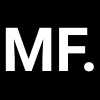With the popularization of cryptocurrencies, such as Bitcoin, another technology is becoming more and more in evidence, the blockchain . But after all, what is this? How it works? And what are your applications? These are some of the first questions I am asked, at the end of this article we will understand the basics of the blockchain and also what the blockchain is not.
Blockchain History
First of all we need to understand in which context the blockchain was created.
The first blockchain was conceptualized by a person (or group of people) known as Satoshi Nakamoto in 2008, nobody knows for sure who the real owners of this pseudonym is or are. Nakamoto has improved the design of existing block transaction concepts in an important way, using a known method to time-stamp blocks without requiring them to be signed by a relying party and present a difficulty parameter to stabilize the rate at which blocks are added to the chain. This design was implemented by Nakamoto as a core component of the bitcoin cryptcurrency.
Although the idea was originally implemented for cryptocurrencies, specifically the bitcoin , we will see that currently the blockchain has several uses and a lot of potential to modernize several bureaucracies that we know.
Understanding the Blockchain
Blockchain is a series of immutable data records with timestamps, managed by a group of computers that do not have centralized control. Each block of data ( blocks – blocks) is secured and connected to each other using encryption ( chain – chain).
The network does not have a central authority, making it a democratized system. Imagine it as a shared and unchanging book, all information is open for all participants and everyone to see and participate in decisions.
The blockchain is basically an ingenious yet simple way of getting information from point A to point B, fully automated and secure. Imagine the following scenario: A person wants to rent an apartment, for that he needs to authenticate his signature and also needs witnesses
One end of the chain starts the process by creating a block. This block is validated by thousands, perhaps millions of computers distributed over the network. The checked block is added to a chain, which is stored across the entire network, and all participants have a copy of the data in their book, creating not just a unique record, but a unique record with a unique history. Spoofing a single record would mean spoofing the entire chain in all instances, and that's practically impossible. THE Bitcoin, for example, use this template for your transactions.
We can also think of the blockchain as a chain of registries, where you need to authenticate to perform a transaction and you need someone impartial to validate the process, including the blockchain is an excellent candidate for the extinction of registries.
the YouTube channel Spare me! created a very nice and didactic explanation video, it's also worth checking it out.
Known Uses of Blockchain
Blockchain can be used in many ways, many already implemented around the world and many initiatives emerging.
1. Processing Payments and Money Transfers
Arguably, the most popular use of the blockchain is as a means of transferring funds from one party to another. By removing the removed banks from the equation and validating ongoing transactions 24 hours a day, seven days a week, most transactions processed on a blockchain can be securely settled in a matter of seconds.
two. Monitor supply chains
Blockchain is also particularly useful when it comes to monitoring supply chains. Companies must be able to quickly identify inefficiencies in their supply chains as well as locate items in real time. In addition, the blockchain would allow businesses and possibly even consumers to see how products performed from a quality control perspective as they traveled from their place of origin to the retailer.
3. Digital ID
More than 1 billion people around the world face identity challenges. Microsoft is looking to change that. He's creating digital IDs in his Authenticator app — currently used by millions of people — which would give users a way to control their digital identities. This would allow people from poor regions to access financial services or start their own businesses. Obviously, Microsoft's attempts to create a decentralized digital ID are still in the early stages, but it's an initiative worth following closely.
4. digital voting
The Blockchain offers the ability to vote digitally, but is transparent enough that any regulator can see if anything has changed on the network. It combines the ease of digital voting (can be "anonymous") with blockchain immutability to make your vote truly count.
5 . Automatic real estate, land and title transfers
One of the main goals of the blockchain is to take paper and bureaucracy out of the equation. If you are buying or selling land, houses or cars, you will need to transfer or receive a document. Instead of dealing with this on paper, using notary offices, the blockchain could store titles on its network, allowing a transparent view of this transfer, as well as presenting a clear picture of legal ownership.
Conclusion
We saw that the blockchain is an innovative and versatile technology, its use will facilitate and reduce the cost of many existing processes, we have listed just some of the already known applications, but imagination is the limit for its use.
References:
https://medium.com/swlh/blockchain-for-dummies-d3daf2170068
https://blockgeeks.com/guides/what-is-blockchain-technology/
https://www.fool.com/investing/2018/04/11/20-real-world-uses-for-blockchain-technology.aspx
https://www.investopedia.com/terms/b/blockchain.asp
0
votos
